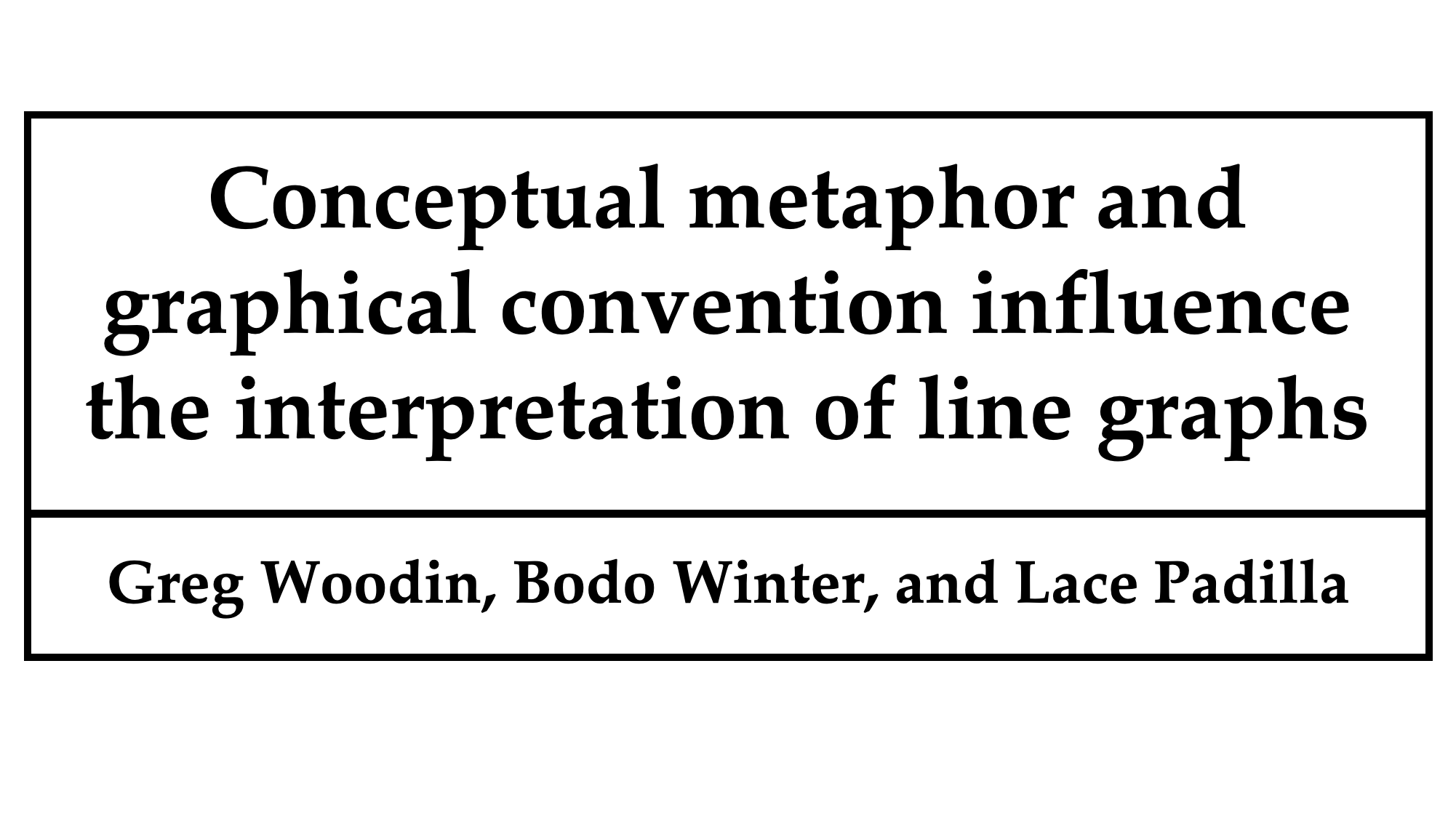Conceptual Metaphor and Graphical Convention Influence the Interpretation of Line Graphs
Greg Woodin, Bodo Winter, Lace Padilla
External link (DOI)
View presentation:2021-10-27T13:15:00ZGMT-0600Change your timezone on the schedule page
2021-10-27T13:15:00Z

Fast forward
Direct link to video on YouTube: https://youtu.be/W_VnI5lc_uw
Keywords
Conceptual Metaphor Theory, More is Up, Mental Number Line, Cognition, Linguistics, Emotional Valence, Line Graph, Axis Reversal, Handedness, Empirical Evaluation
Abstract
Many metaphors in language reflect conceptual metaphors that structure thought. In line with metaphorical expressions such as ‘high number’, experiments show that people associate larger numbers with upward space. Consistent with this metaphor, high numbers are conventionally depicted in high positions on the y-axis of line graphs. People also associate good and bad (emotional valence) with upward and downward locations, in line with metaphorical expressions such as ‘uplifting’ and ‘down in the dumps’. Graphs depicting good quantities (e.g., vacation days) are consistent with graphical convention and the valence metaphor, because ‘more’ of the good quantity is represented by higher y-axis positions. In contrast, graphs depicting bad quantities (e.g., murders) are consistent with graphical convention, but not the valence metaphor, because more of the bad quantity is represented by higher (rather than lower) y-axis positions. We conducted two experiments (N = 300 per experiment) where participants answered questions about line graphs depicting good and bad quantities. For some graphs, we inverted the conventional axis ordering of numbers. Line graphs that aligned (vs misaligned) with valence metaphors (up = good) were easier to interpret, but this beneficial effect did not outweigh the adverse effect of inverting the axis numbering. Line graphs depicting good (vs bad) quantities were easier to interpret, as were graphs that depicted quantity using the x-axis (vs y-axis). Our results suggest that conceptual metaphors matter for the interpretation of line graphs. However, designers of line graphs are warned against subverting graphical convention to align with conceptual metaphors.